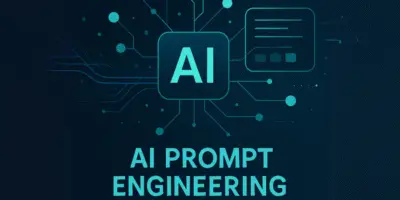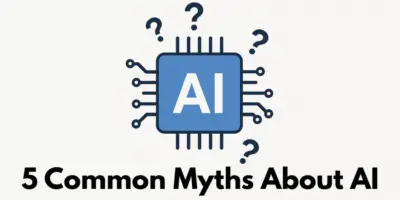Ever asked ChatGPT to identify what someone is wearing in an image and wondered how it correctly responded with “baseball cap, jersey, and jeans”? How does it “see” these items when it’s just processing data? The answer lies in something called neural networks—and trust me, they’re both simpler and more complex than you might think.
Let me break down how AI actually “thinks” about images in a way that’s easy to understand, and why—despite all the incredible advancements—your brain is still light-years ahead of the most sophisticated AI systems.
Table of Contents
The Basics: How Neural Networks Process Images
When you show an AI system like ChatGPT an image, you’re really feeding it into what’s called a neural network. This network is loosely inspired by the human brain (and I mean very loosely—more on that later).
Here’s how it works in simple terms:
- Input Layer: This is where the image enters the system. Your photo of a baseball cap gets broken down into pixels.
- Hidden Layers: These are the processing layers between input and output. Each layer contains “nodes” (or artificial neurons) that analyze different aspects of the image.
- Output Layer: This gives you the final answer: “That’s a baseball cap!”
Each node in these layers connects to every node in the next layer. It’s like a massive web of connections, with each connection having a specific “weight” or importance.
What’s Really Happening Inside
Let’s visualize this process:
Imagine I upload a photo of a classic American baseball cap to AI. What happens next?
The nodes in the first hidden layer might not be looking for “baseball cap” directly. Instead, some nodes might detect curved lines, others might detect the fabric texture, and others might identify the brim shape or team logo on the front.
These nodes then pass this information forward with varying levels of confidence:
- Node 1: “I’m 90% sure I see a curved brim”
- Node 2: “I’m 85% sure I see a fabric texture typical of caps”
- Node 3: “I’m 70% sure this is worn on a head”
As this information passes through more layers, the system refines its understanding. By the final layer, the network has combined all these simple observations into a complex conclusion: “This is a baseball cap with 95% confidence.”
How Does AI Learn to Recognize Objects?
The magic happens during training. Neural networks aren’t born knowing what a baseball cap is—they have to learn through a process called deep learning.
Here’s how it works:
- Training Data: The AI is fed thousands (or millions) of images with labels. “This is a baseball cap,” “This is a jersey,” “This is a pair of jeans.”
- Prediction: The untrained AI makes a guess about what’s in the image.
- Error Correction: If the AI guesses wrong (like saying a baseball cap is a cowboy hat), the system adjusts the connections between nodes through a process called “backpropagation.”
- Repeat: This happens thousands of times until the AI becomes accurate.
Think of it like teaching a child. You show them pictures in a book: “That’s a dog, that’s a cat.” Eventually, they learn to recognize these animals—but they need lots of examples first.
The Human Brain vs. AI: It’s Not Even Close
Now for the reality check—despite how impressive AI image recognition is, your brain still blows it out of the water. Here’s why:
1. Scale
- ChatGPT (GPT-4): Approximately 1.7 trillion parameters (connections)
- Human Brain: 100 trillion synapses (connections), possibly up to a quadrillion!
That’s right—your brain has at least 50 times more connections than the most advanced AI systems.
2. Energy Efficiency
- Your Brain: Uses about 20 watts of power
- Training GPT-4: Required 50 gigawatts (that’s 50 billion watts!)
Your brain is doing more complex operations while using less energy than a light bulb.
3. Learning Style
AI needs to learn everything in massive batches. If you want to teach it something new, you often need to retrain the entire system with all data—old and new.
You? You can learn one new thing right now. If I tell you a “framistan” is a fictional device that converts thoughts into digital images, you’ve just learned that forever. No need to relearn everything else you know.
4. Real-time Correction
If you learn something incorrectly, you can update that single piece of knowledge without disrupting everything else you know.
AI systems typically can’t do this—they need complete retraining.
5. True Creativity
AI can only create variations of what it’s been trained on. Show it two pictures, and it can blend elements from both—but it cannot truly invent something completely new that doesn’t resemble its training data.
You can imagine creatures, objects, or concepts that have never existed before.
6. Self-Repair and Adaptation
Your brain can actually repair damaged neural pathways and create new connections as needed. Neural networks are fixed once trained.
Why This Matters
Understanding how AI “sees” helps us appreciate both its capabilities and limitations. When ChatGPT correctly identifies a baseball cap, it’s not because it understands American sports culture or has seen people wearing them at games. It’s because it has processed patterns in pixels that statistically correlate with labels humans have provided.
The next time you’re impressed by AI’s ability to recognize objects, remember: it’s doing an impressive job of pattern matching—but your brain is doing something far more sophisticated with far fewer resources.
Your brain runs on just 20 watts, can learn continuously without forgetting old information, repairs itself, and operates with general intelligence rather than specialized functions. Meanwhile, modern AI systems like ChatGPT are still fundamentally specialized tools that—despite their impressive abilities—are just scratching the surface of what natural intelligence can do.
We’ve come amazingly far with artificial intelligence, but the most incredible computer is still the one sitting between your ears.


